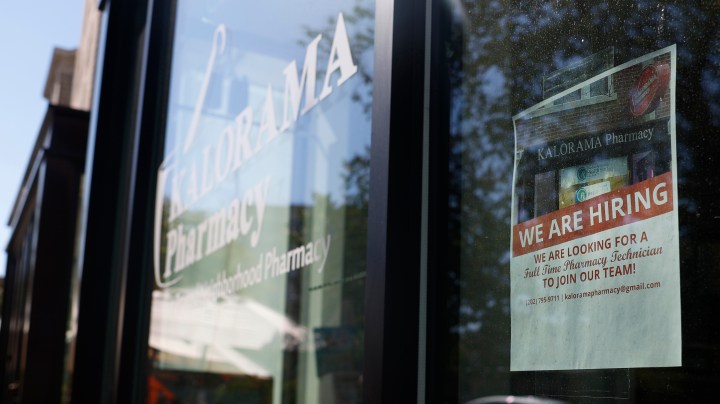
What’s with all the hiring?

The Federal Reserve announced Wednesday that it would — as expected — raise interest rates by three-quarters of a percentage point. The labor market, though, doesn’t quite seem to have received the memo that the economy needs to cool down some for inflation to get under control.
Payroll processor ADP estimates the number of jobs private employers added in October was 239,000 — up from last month’s estimate of 192,000. That’s good for workers, but how long can it last?
Companies are still hiring a lot of workers because their customers — that’s us — are still giving them money.
“Consumers are still spending,” said Mark Hamrick, senior economic analyst for Bankrate. “The economy is continuing to expand — we’ve seen that most recently in the GDP rising in the third quarter.”
GDP, as in gross domestic product or the total value of everything produced in the economy. So despite rising interest rates and whispers of recession, employers are still hiring.
“They’re still recovering from the height of the pandemic,” said Amber Clayton with SHRM, the Society for Human Resource Management. For example, workers left some industries, like restaurants, in droves, and there’s also been a decline in immigration.
“Most of what I hear from employers is that they’re struggling to find talent,” Clayton said.
And the fact that it’s been such a pain to find people means that many employers are still looking.
“They’re holding on to workers because of — or at least due in part — to the challenges of finding workers, and so, essentially, it’s this concept of labor hoarding,” said John Leer, chief economist at Morning Consult.
All that said, there are signs the labor winds are changing. “Increasingly it’s the case that lower-income adults are saying that they ran out of their savings and that it prompted them to reenter the labor force,” Leer said.
More workers are taking on second jobs too, he added. So if more workers are coming into the labor market, that could cool things down.
The current pace of hiring can’t go on indefinitely. “The working-age population is just not increasing at that level,” said Erica Groshen, a senior economics adviser at Cornell and former commissioner of the U.S. Bureau of Labor Statistics.
So at some point, she said, something’s gotta give.
There’s a lot happening in the world. Through it all, Marketplace is here for you.
You rely on Marketplace to break down the world’s events and tell you how it affects you in a fact-based, approachable way. We rely on your financial support to keep making that possible.
Your donation today powers the independent journalism that you rely on. For just $5/month, you can help sustain Marketplace so we can keep reporting on the things that matter to you.

















